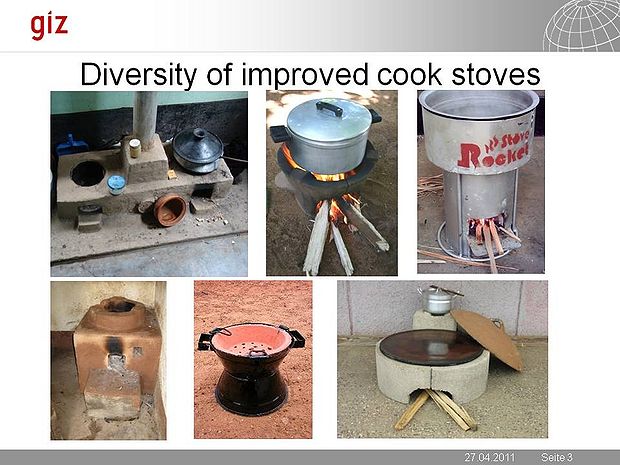Knowledge fuels change - Support energypedia!
For over 10 years, energypedia has been connecting energy experts around the world — helping them share knowledge, learn from each other, and accelerate the global energy transition.
Today, we ask for your support to keep this platform free and accessible to all.
Even a small contribution makes a big difference! If just 10–20% of our 60,000+ monthly visitors donated the equivalent of a cup of coffee — €5 — Energypedia would be fully funded for a whole year.
Is the knowledge you’ve gained through Energypedia this year worth €5 or more?
Your donation keeps the platform running, helps us create new knowledge products, and contributes directly to achieving SDG 7.
Thank you for your support, your donation, big or small, truly matters!
Enhancing Production of Improved Cookstoves (ICS)
==> Back to Overview GIZ HERA Cooking Energy Compendium
Identification of potential ICS markets
The inception study informs the planning process about many aspects:
• Potential project locations
• Potential implementation partners
• Potential useful technologies
• Potential production and marketing concepts
• Political frame conditions for ICS production and marketing
The result of the inception study needs to be verified by important stakeholders, which is usually done in a national stakeholder workshop. As a result of this workshop, potential ICS markets can be described by aspects of:
• Type of customer
• Geographical intervention area
• Characteristics of required technology
• Potential options for production and marketing
Sometimes it is useful to prepare such business cases already upfront and discuss and rank these scenarios at the stakeholder workshop.
It is important to bear in mind that a cooking systems is more than just a financial consideration. It often requires a change of behavior which is difficult to achieve.
The core question is “Why should poor people spend their little cash for an ICS?”
• Financial issues: Investment cost, cost of usage, durability;
• Convenience issues: handling, intensity of attention to the fire, traditional meals, size and height, emissions of heat/light/smoke;
• Status issues: design, modernity, aspirational products;
• Access and vulnerability issues: Can we trust this new product? What does it mean to me if I buy it and than it does not work/I cannot access the fuel (e.g. supply shortage of imported parts or fuels)?
This question has to be answered through the perspective of the potential buyers to investigate if there is a business case. User group discussions or test sales can assist to verify the strength of an ICS market case.
The potential ICS markets can be ranked in various dimensions:
• Purchase power of customer groups;
• Size of the market;
• Access of potential customers to the market / Difficulty to reach customers;
• Likeliness to find a product that suits the demand of the potential customers (existing product or need for product development);
• Competition on the market through other players;
• possibility to scale up existing efforts.
Based on these (and other) criteria, the potential ICS markets can be prioritized. However, it needs to be verified if the “best market” is also relevant from the perspective of the underlying development goals.
“How do we reach ‘the poor’ with our ICS interventions?”
Poverty reduction is the overarching goal of any development intervention. However, there can be huge difference between ‘directly addressing the needs of the poor’ and concepts where poverty reduction is an effect at the outer end of the result chain.
The first step is to agree who should be considered poor in the given environment. Usually there is a strata within “the poor” which can be instrumental in the process of identifying the right target group.
Generally, four concepts of how to address specifically very poor target groups can be distinguished:
1. Promotion of “non-cash” solutions
2. Make “special products” for the poor available
3. Make “special prices” for the poor available
4. Reaching the poor by improving social services
Each of these concepts has its specific rational and approaches.
At some stage there seems to be a trade-off between poverty orientation and sustainability. While “non-cash” self-help stoves and highly subsidized stoves may allow to reach fast many very poor people, the development of special products (to be sold at commercial rates) or the support through improved social services may result on the long run into more sustainable benefits for the poor.
Technology selection
A wide range of improved cook stoves have been developed and disseminated in the past 30 years.
The links between technology selection and design of the intervention
Planning of ICS interventions
Planning of activities to enhance ICS production
Piloting ICS Production
Scaling-up of ICS production capacities





















